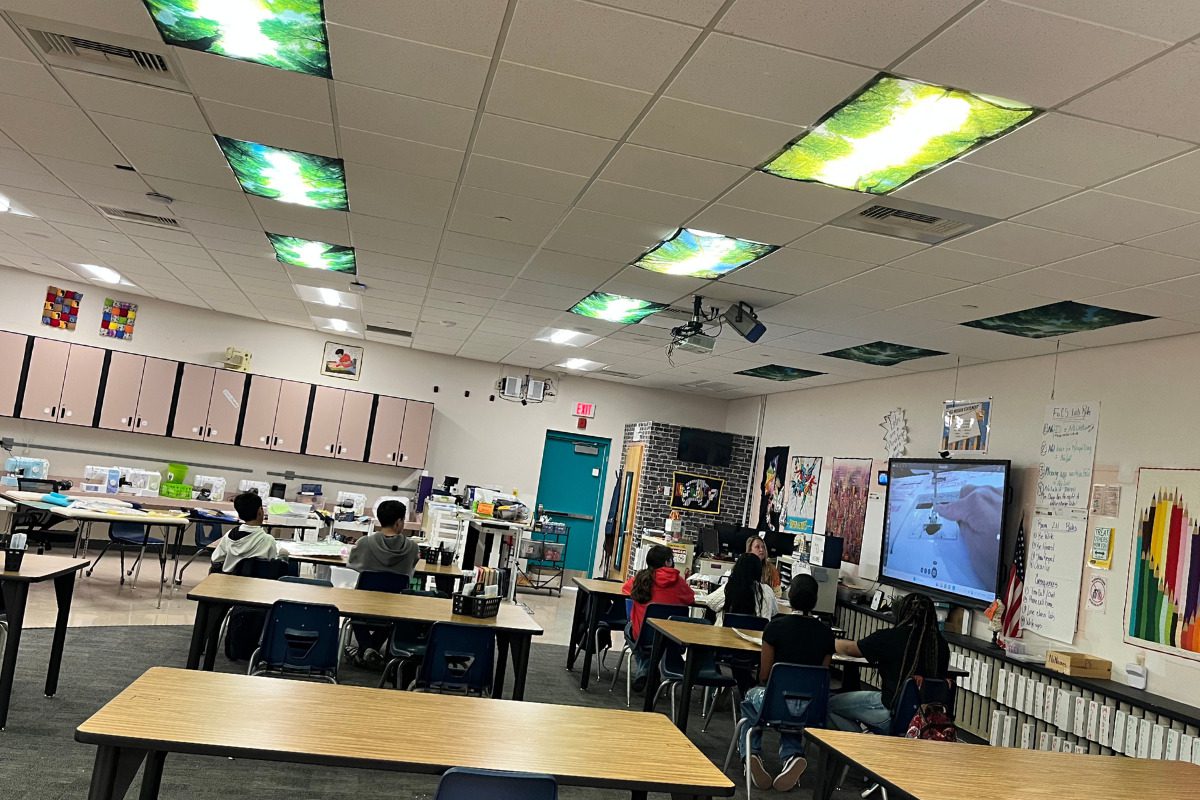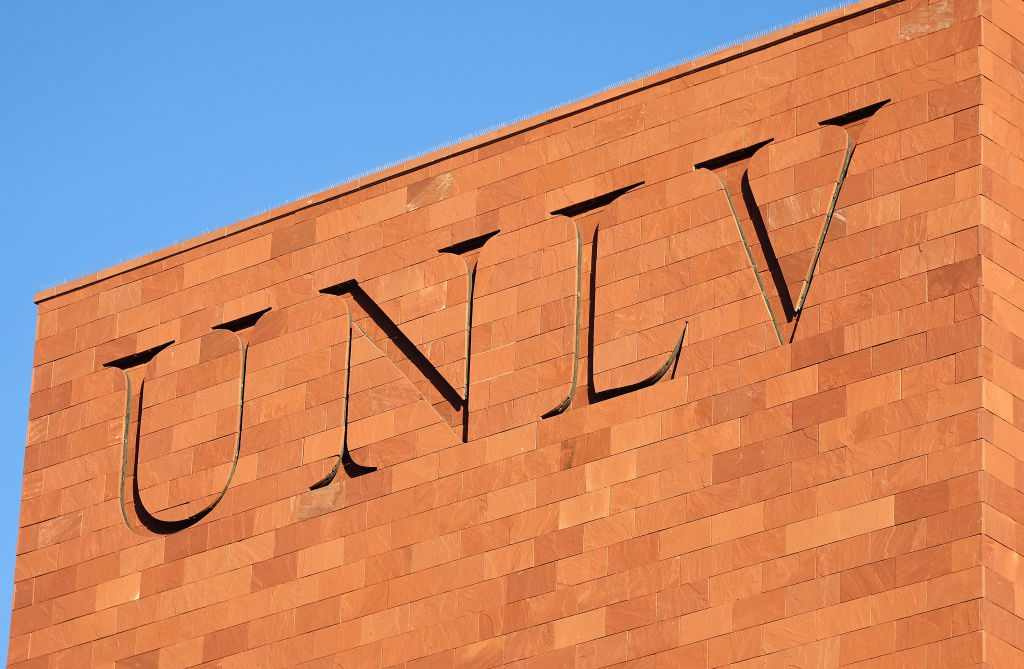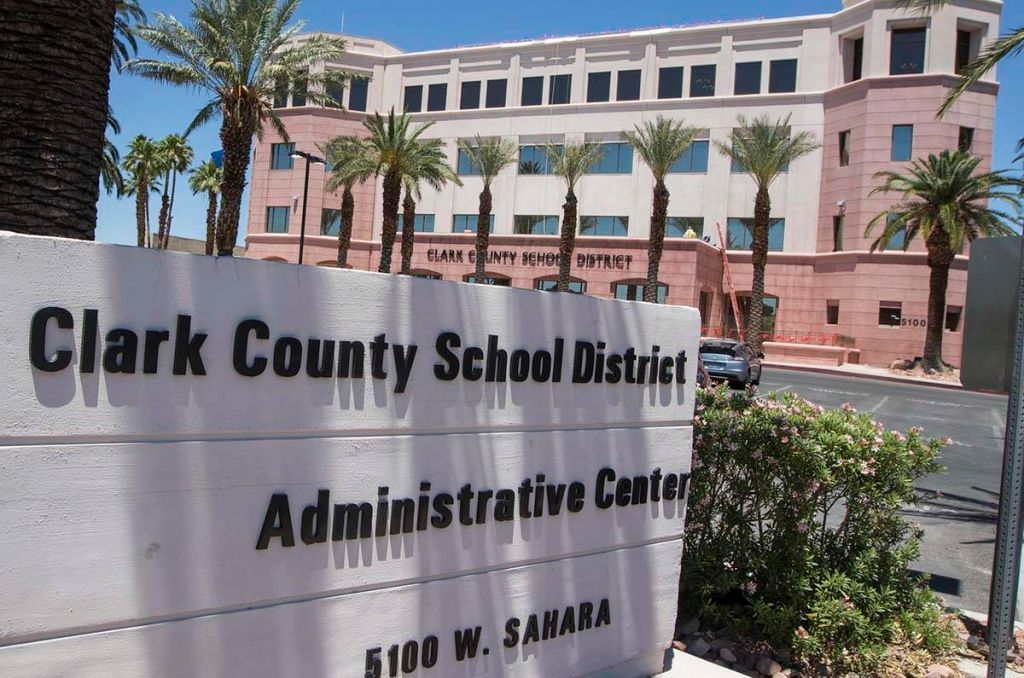
An elective class period at Swainston Middle School on Monday, October 20, 2025. (Naoka Foreman/The Nevadan / El Nevadense)
As the educational landscape adjusts to structural changes like reduced federal funding, expanded school choice, and charters, enrollment in low-ranking schools plummets.
In an elective course at Swainston Middle School, classrooms can see as few as two to three students a class period this fall. It’s a small glimpse of a major shift: Clark County School District (CCSD) lost roughly 9,000 students this year as migration slows, families turn to charter schools, homeschooling, and other alternatives. This year marks the eighth straight year of decline, reports the Las Vegas Sun.
At the same time, the charter school system is expanding—reshaping Nevada’s educational landscape and growing to the state’s second-largest school district with more than 64,000 students. Meanwhile, the rise of school choice has fueled overcrowding at high-ranking suburban schools, resulting in historically marginalized campuses losing students at alarming rates, with some schoolhouses seeing enrollment as low as 46%, reports Channel 8 News.
Nevada allocates funding per pupil. When parents choose a charter school or a school outside their community, those dollars go with them, leaving fewer resources for the already poorly-funded campuses from which they are pulling their children.
“It’s almost like the system is rigged for our schools and communities that are under-resourced,” said Tonya Walls, a sixth-grade English teacher at Swainston Middle School. “We’re seeing schools become even more segregated than before.”
According to the Nevada Report Card, which ranks schools based on student performance, Swainston Middle School was rated one star last year. The low ranking is based on consistent underperformance among certain students, including those with learning disabilities. Walls, an educational equity researcher and former assistant principal at CCSD, attributes this to inadequate resources.
She said on top of falling birth rates, persistent teacher vacancies, and chronic underfunding, that school choice movements contribute to the continued slide in enrollment at Nevada’s largest public school system—Clark County—which served more than 300,000 youths last school year.
Walls added that the “proliferation” of “business-oriented” charter schools incentivized parents to shift away from public schools, particularly exacerbating the vulnerability of low-ranked schools.
“You can’t fault families for wanting what’s best for their kids, and at the same time, systems are working exactly how they were meant to work,” Walls said.
Nevada ranks among the lowest in the nation for equity in schools, based on funding levels, alongside Texas and Florida, according to a 2022 report by the Education Law Center. Even after passing historic legislation in 2023 that increased the school budget by $2 billion, school spending in Nevada lags behind, ranking 45th in the country.
With Nevada’s historically low ranking, Republican Gov. Joe Lombardo is looking to push school choice policies aimed at increasing accountability in schools as stated on his 2026 campaign website.
During the last legislative session, he unsuccessfully pushed for struggling schools to be converted to charters through an education bill introduced a day before the Legislature ended, reports the Nevada Independent. The proposal was combined with Democratic Senate Majority Leader Nicole Canizzaro’s education bill, which scrapped the charter school conversion policies but retained Lombardo’s open enrollment measure, allowing students to attend schools outside of their ZIP codes. The bill also created transportation subsidies for children fleeing low-ranked schools.
“We implemented open zoning so our children can attend the school that best fits their educational needs,” read a June statement from the governor’s office on the 2025 legislative session. “We provided resources to allow those children trapped in underperforming schools’ transportation to attend the school of their choice–regardless of their zip code.”
Open enrollment went into effect upon passage, and students can apply for schools outside their zoning this month until Jan. 13, 2026, for the following school year.
This comes as schools potentially face another blow to funding that could devastate struggling schools nationwide.
President Donald Trump proposed a $12 billion cut to public education, which the Education Law Center estimates will result in more than $63 million being stripped from Nevada. His administration may also revive Nevada’s Opportunity Scholarships, potentially allocating federal tax dollars toward private school vouchers after Democrats stalled its funding mechanisms, reports the Nevada Independent.
With one change, there’s another
Jeffrey Geihs, Executive Director of the Nevada Association of School Administrators, who has served on several charter school boards and supports school choice, agreed that the enrollment decline at CCSD reflects the growth of charter schools. While the shift poses a challenge for traditional schools, he said it’s also an opportunity for families.
“What we see is a lot of charter schools are opening in the more economically disadvantaged parts of our community,” he said. “And parents have choice in the state of Nevada, and a lot of parents are choosing the charter route.”
For Monique Griffin, a North Las Vegas mother of five, those choices have been transformative and effective. Concerned about racism and unsafe learning environments, she transitioned two of her younger sons from CCSD to a private school, and then to homeschooling. Now, her oldest sons attend a local charter high school. They both avoided Swainston Middle School, which they’re zoned for, while being homeschooled.
“My youngest [boy] just got student of the quarter for his freshman year,” Griffin said. “They’re both doing well.”
Griffin is among the families nationwide moving millions away from traditional public schools, a change that Geihs said has led to tensions in other cities, such as district-run school closures, the forced combination of schoolhouses, and rezoning.
Walls cautioned that school choice policies increase “middle-class flight” and exacerbate economic and racial disparities within an already-fractured education system. She urged lawmakers to divert from school choice initiatives and instead to better invest in under-resourced district schools, which are legally obligated to accept all students residing within their designated ZIP codes. In contrast, charter school admission is based on a lottery system due to limited capacity.
“Why can’t we use those same dollars that we’re taking out of our schools and our communities to reform [under-resourced] schools?” she said.

Back-to-school fairs in the Las Vegas area (July 26-Aug 9)
There are several back-to-school fairs in the Las Vegas area ahead of the first day of school on Aug. 11—many offering free supplies, CCSD...

Back to class: What to know for the 2025-2026 Nevada school year
This story appeared in The Nevadan newsletter, subscribe here. The first day of school in Nevada is Aug. 11. Here are some reminders and things to...

Lombardo supports Trump’s executive order to dismantle education department
Nevada Attorney General Aaron Ford called out Lombardo for supporting the elimination of the Department of Education, claiming the governor “sold...

10 scholarships for Hispanic students in Nevada
Ready to take your education to the next level? Here are 10 college scholarships for Hispanic and Latino students in Nevada. Scholarship...

Trump administration investigating UNLV over diversity efforts
UNLV is the only Nevada institution under investigation, but several universities in neighboring states were also included in the probe. Nevada’s...

CCSD chooses Jhone Ebert as new superintendent
In a unanimous vote, the Clark County School District Board of Trustees selected Jhone Ebert as the new superintendent for the district during a...





